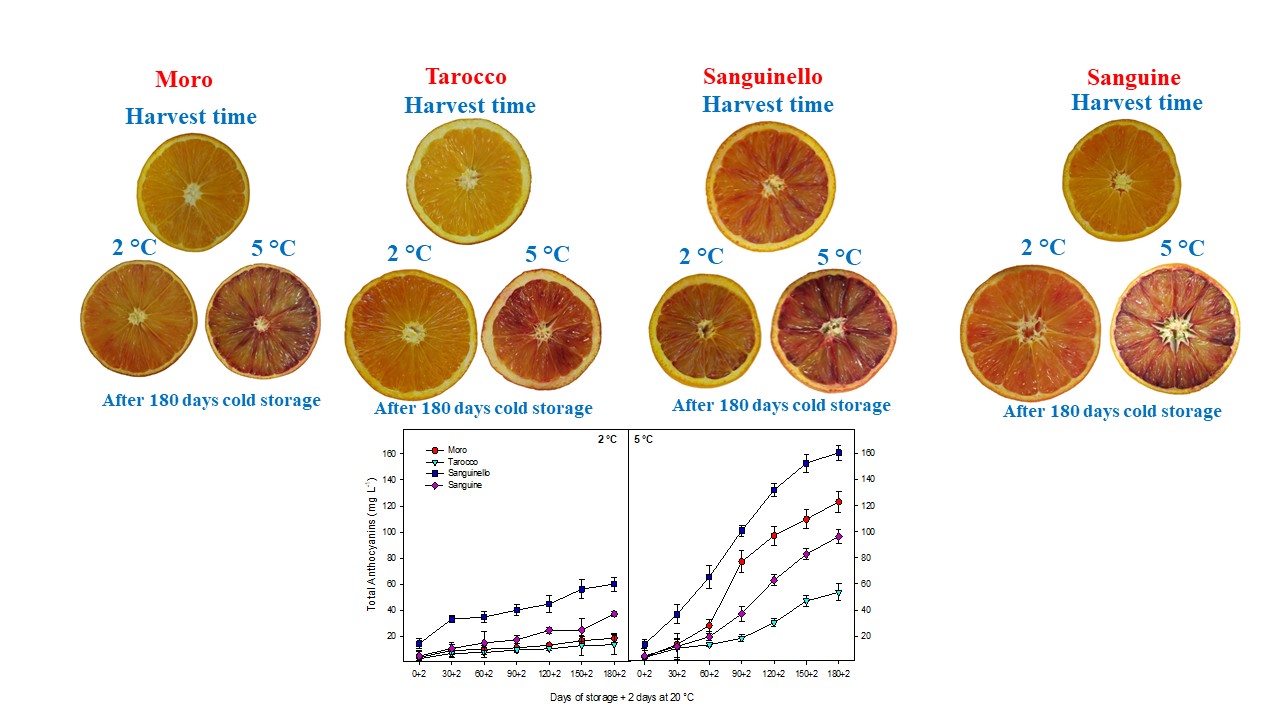The changes in nutritional quality, bioactive compounds and antioxidant enzymes in the juice of four blood orange cultivars (‘Moro’, ‘Tarocco’, ‘Sanguinello’ and ‘Sanguine’) stored during 6 months at 2 and 5 °C plus 2 days at 20 °C for shelf life were studied. Sucrose was the sugar found at higher concentration and decreased during storage for all cultivars, as did glucose and fructose. Organic acids decreased at both temperatures and the highest content was found in ‘Sanguinello’, especially the major (citric acid) and ascorbic acid. Total phenolics content (TPC), total anthocyanins (TAC), and the individual (cyanidin 3-glucoside and cyanidin 3-(6″-malonylglucoside)) increased for all cultivars, the ‘Sanguinello’ having the higher concentrations. Antioxidant enzymes catalase (CAT), ascorbate peroxidase (APX) and superoxide dismutase (SOD) were higher also in ‘Sanguinello’ and increased during storage. Overall, these results together with the sensory analysis suggest that ‘Sanguinello’ would be the best cultivar for prolonged storage.

